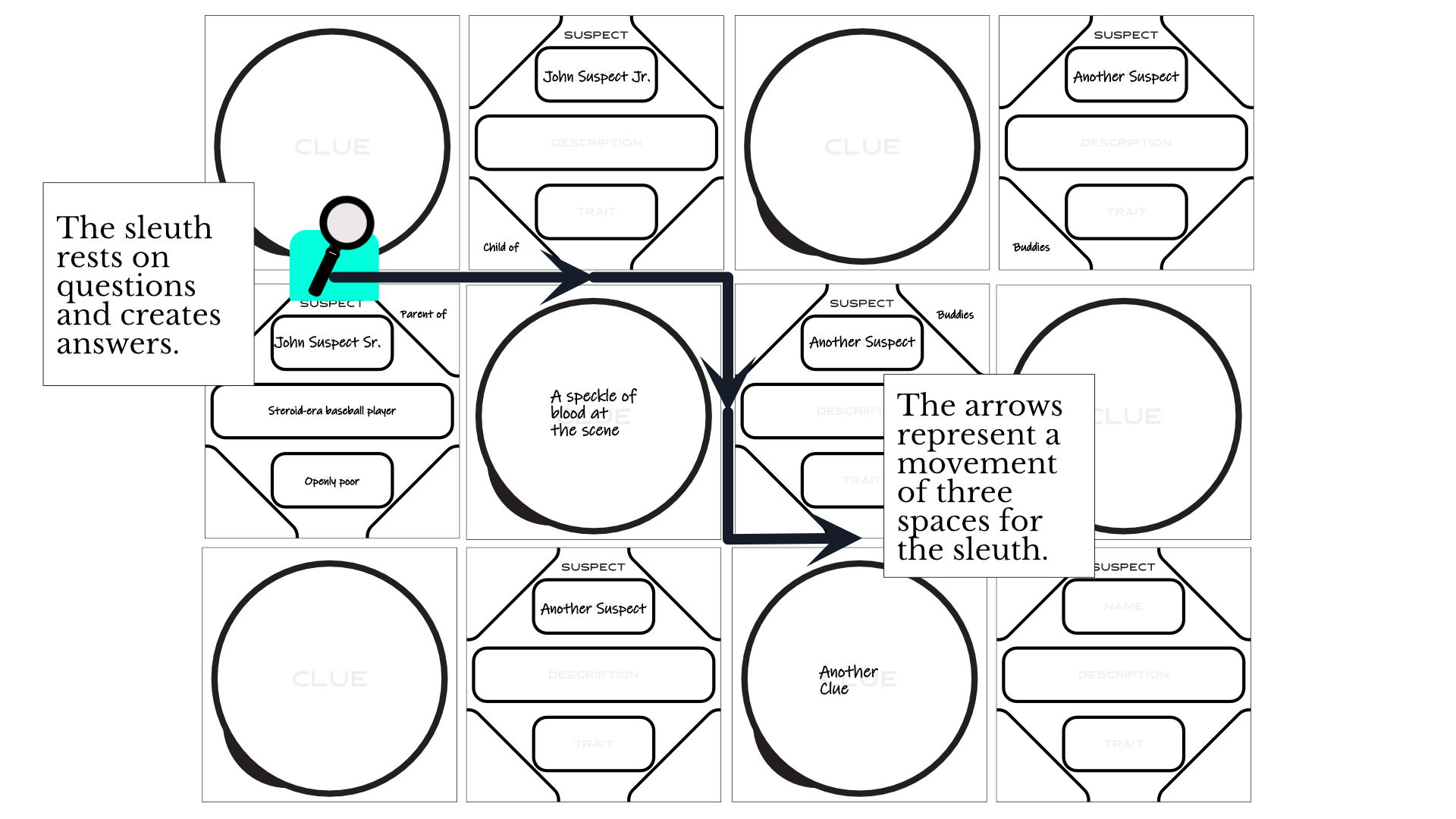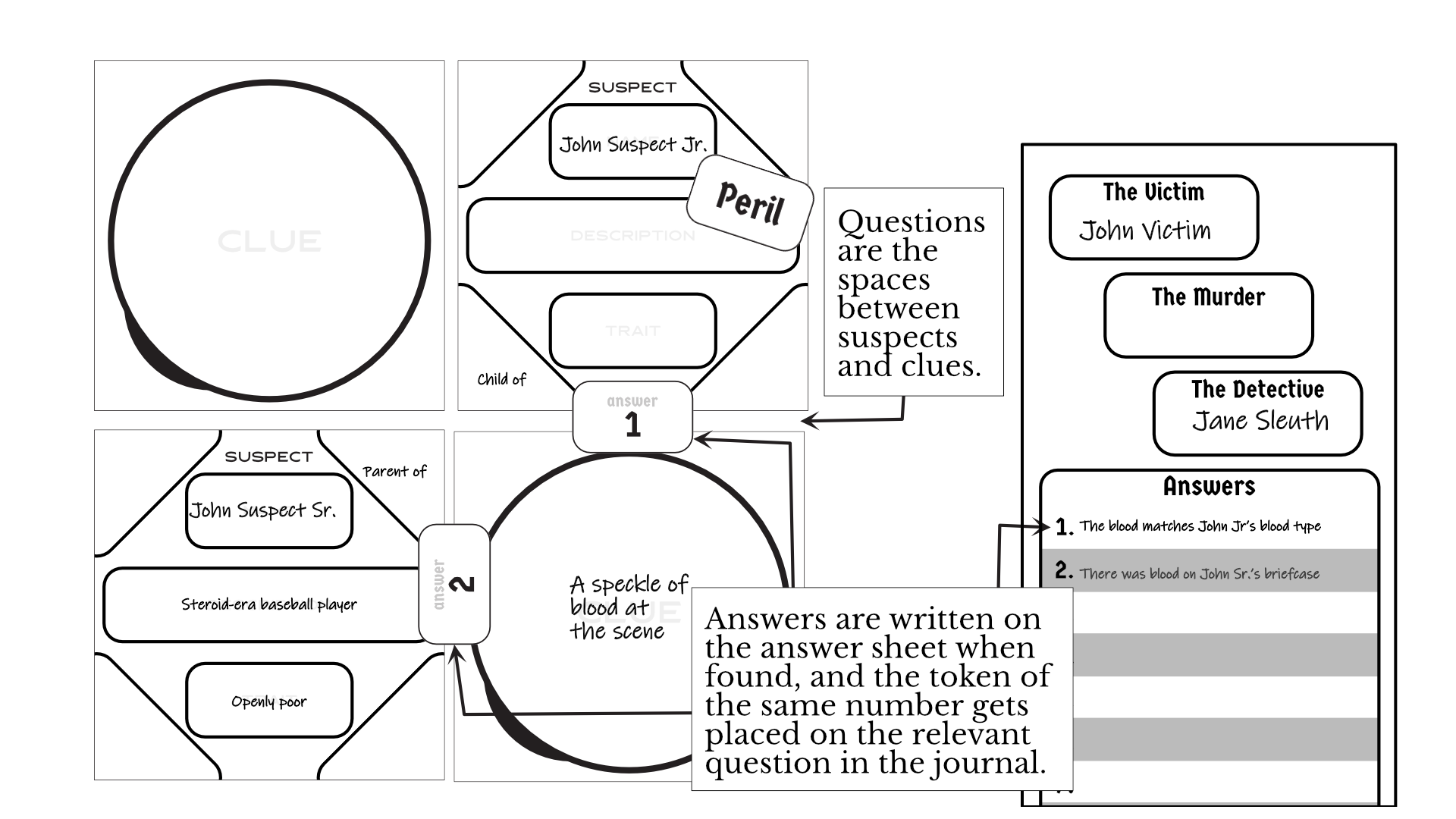The Sleuth
The Sleuth
At this stage of our game, we’ve got a considerable amount of suspects and clues arranged in a grid in our journal. Each suspect may border four clues; each clue may border four suspects. We refer to these borders as questions. At its simplest, each question is, “How are these things related, and how does that help solve the mystery?”
Enter the sleuth. If the killer represents the specter of murder, the sleuth represents the pursuit of the truth. As such, the sleuth doesn’t rest on suspects like the killer does. Instead, the sleuth lives in those gaps in the narrative; that is to say that the sleuth lives in the questions, and works to answer those questions to untangle the mystery. During the Investigation, the sleuth will move before each chapter.

Moving the Sleuth
Think of the questions like a grid of streets between the suspects and clues in our journal. When moving the sleuth, you will move it through a number of intersections made by these streets, going left, right, or straight at each one. The player whose turn it is can move the sleuth up to a number of spaces equal to the rank of the drawn card.
Removing Peril
When the sleuth ends its movement, you may remove a peril token on the suspect the sleuth is now adjacent to. You can save a life by investigating an imperiled suspect!
Updating Clues
During the Investigation phase, we will write chapters to update the clue the sleuth sits next to. Once you find a connection between the suspect and the clue, update that clue with the new information. You can append these new details to what’s already there, or erase and re-write the clue based on how you now understand it. The important thing is that the clue itself changes in some way, reflecting the deeper understanding of the mystery now held by the detective
